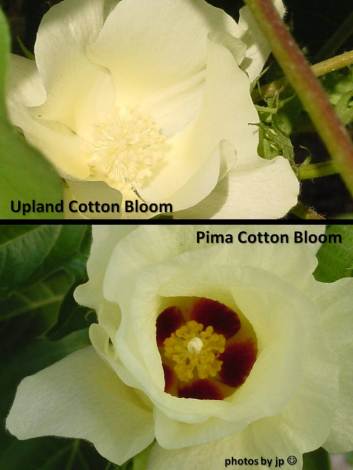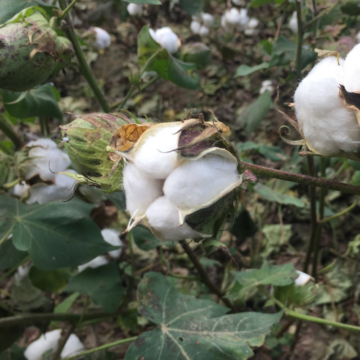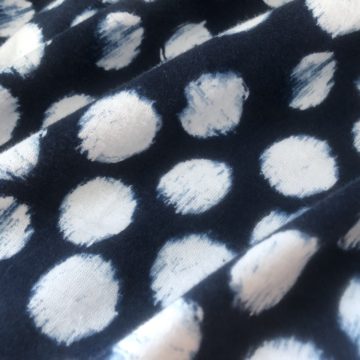Have you heard about Pima cotton? It tends to be considered softer and smoother because of the length and strength improvements which allow for high counts on weaving. In fact, some people compare the feeling of Pima to silk. It remains a premium product that provides a diffrent feel and high quality product that can lead to a longer lifespan.
Pima needs to be ginned on special equipment (roller gins designed to minimize lint breakage further). With the requirement of that specialized equipment as well as the reality that Pima cottons grow better in hot dry areas, it tends to be grown in parts of California, Arizona and West Texas. Farmers receive a premium for growing Pima cotton.
Pima is actually genetically different than upland cotton and has different flowers that look more like a hibiscus than the upland cotton found in the majority of our cotton clothing and textiles.
Supima is a superior Pima grown in the US and is part of a marketing program. You can learn more from the Supima FAQ on their website, information on their blog or follow them on Twitter (@Supima).
Less About Cotton, More About Native American history
By the way, the #agnerd & #peoplenerd in me has to point out that Pima is also a Native American tribe. And in fact, growing up that was my first connection to the word as a friend of my family was Pima. A website on the tribe’s history says this about their connection to agriculture:
Agriculture by the aid of irrigation has been practiced by the Pima from prehistoric times. Each community owned an irrigation canal, often several miles in length, the waters of the rivers being diverted into them by means of rude dams; but in recent years they have suffered much from lack of water owing to the rapid settlement of the country by white people. Until the introduction of appliances of civilization they planted with a dibble, and later plowed their fields with crooked sticks drawn by oxen. Grain is threshed by the stamping of horses and is winnowed by the women, who skillfully toss it from flat baskets. Wheat is now their staple crop, and during favorable seasons large quantities are sold to the whites. They also cultivate corn, barley, beans, pumpkins, squashes, melons, onions, and a small supply of inferior short cotton. One of the principal food products of their country is the bean of the mesquite, large quantities of which are gathered annually by the women, pounded in mortars or ground on metates, and preserved for winter use. The fruit of the saguaro cactus (Cereus giganteus) is also gathered by the women and made into a syrup; from this an intoxicating beverage was formerly brewed. As among most Indians, tobacco was looked upon by the Pima rather as a sacred plant than one to be used for pleasure. Formerly they raised large herds of cattle in the grassy valleys of the upper Gila. The women are expert makers of water-tight baskets of various shapes and sizes, decorated in geometric designs. They also manufacture coarse pottery, some of which, however, is well decorated. Since contact with the whites their native arts have deteriorated.
It’s the “small supply of inferior short cotton” that catches my attention. The names of so many places I’ve been have been connected to the Pima for generations. And in the past century, the development of longer, stronger fiber suitable for Arizona has enabled a lot more farmers to grow higher quality varieties in the Gila River Valley and other areas.






Love reading a post like this one. So informative. Makes me want to travel to region and learn more. Any idea if the Pima women have held on to their tradition of basket-making?
I don’t remember seeing any of that there… but I do see it in another cotton-producting region… Sounds like another blog post!
And here I thought cotton was just cotton! Goes to show what I know.
LOL! I’m sure lots of folks don’t think about cotton nearly as much as I do! I love it though!